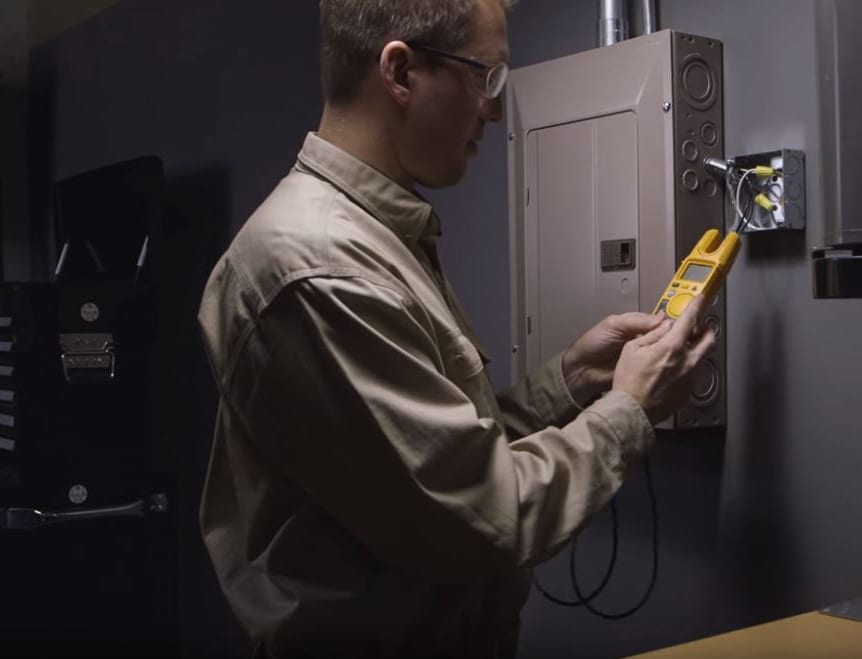 While many people automatically proceed with caution when working on potentially live electrical devices, even the best electricians sometimes fall victim to common electrical safety mistakes. Here’s a list of what NOT to do when taking electrical measurements.
While many people automatically proceed with caution when working on potentially live electrical devices, even the best electricians sometimes fall victim to common electrical safety mistakes. Here’s a list of what NOT to do when taking electrical measurements.
Replace an original fuse with a cheaper one

Digital multimeters (DMMs) that meet today’s safety standards include a special high-energy fuse designed to pop before an overload hits your hand. Border States’ Fluke multimeters, for example, use a special sand-filled fuse designed to extinguish an arc within the fuse enclosure. Be sure to replace it with the same kind of authorized fuse.
Use a piece of wire or metal to get around a fuse

That may seem like a quick fix if you’re caught without an extra fuse, but it won’t provide protection against a sudden spike.
Use the wrong test tool for the job
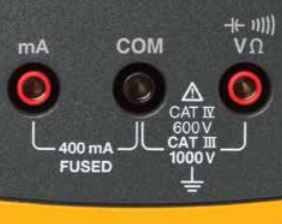
Make sure your electrical testing tool holds the correct CAT rating for each job you do, even if it means switching DMMs throughout the day. Check out the following CAT table to learn more.
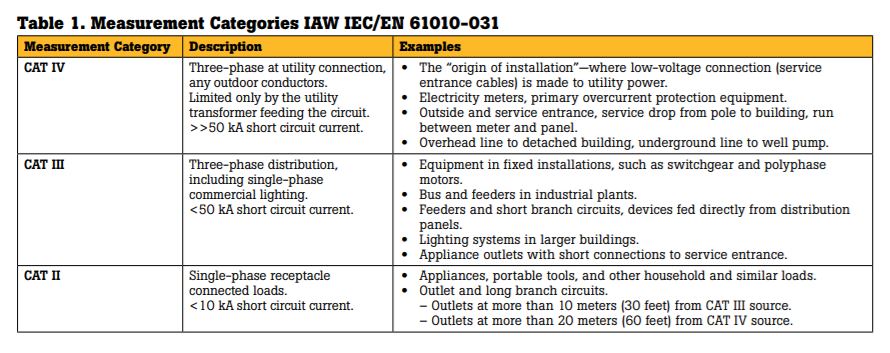 Grab the cheapest DMM on the rack
Grab the cheapest DMM on the rack

If that cheap test tool doesn’t actually have the safety features it advertised, you could end up a victim of a safety accident. Look for independent laboratory testing markings like CSA or UL that ensure the tool meets standards.
Skip out on PPE

It’s crucial to wear safety glasses. The same goes for insulated tools, insulated gloves, ear plugs, your face shield and arc-resistant clothing.
(Scroll to the bottom of this link to learn more about PPE categories.)
Fail to follow lockout-tagout procedures
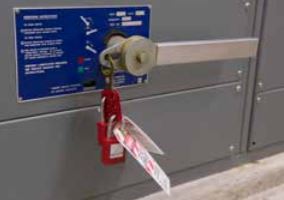
Lockout-tagout procedures exist to protect you from potentially fatal electric shock. When conducting equipment maintenance, unexpected energy activations can happen without a proper lockout-tagout policy.
Work on a live circuit

De-energize a circuit before starting work. If you must work on a live circuit, make sure an arc flash risk assessment has been completed, and verify the operation of your test tool by testing a known voltage source first.
Multi-task while measuring
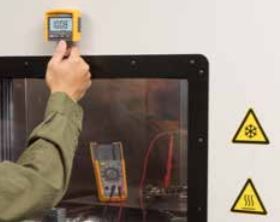
When working with live circuits, try not to hold the meter in one hand while testing with the other. Hang or rest the meter, or use a wireless read-out, to get the meter out of your hands and the readings at eye level. Additionally, use an alligator clip for your ground, so you’re only using one hand to probe the energized conductor.
Hang on to an old test tool too long

Today’s test tools contain safety features unheard of even a few years ago. These features are worth the
cost of an equipment upgrade and a lot less expensive than an emergency room visit. For example, new standards restrict the length of metal in the tip of a test probe to 4mm or less in CATIII/IV environments.
Avoid common electrical safety mistakes
Keeping these simple – yet crucial – tips in mind could help save your life. Learn more about electrical inspection safety.
This blog post was drafted in partnership with Fluke Corporation. Check out Fluke’s original article, “10 dumb things smart people do when testing electricity.”
Related posts
Measure voltage without test leads with Fluke’s T6 Electrical Tester
Electrical panel inspection safety tips for every electrician